| SYMPTOM | DETAILS | DISEASE | TREATMENT |
|---|---|---|---|
Fish swimming upside down.
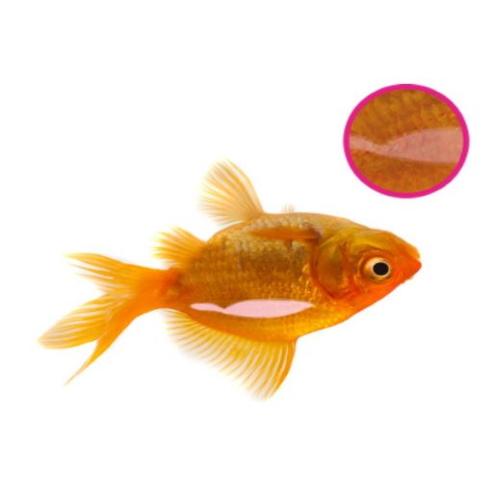
| Fish use their swimbladder for buoyancy and stability. When it becomes infected with bacteria species such as Aeromonas or Pseudomonas, it can cause stress which may result in death. | Swimbladder Infection | Swimbladder Treatments |
Fine white spots on body, fins and tail. 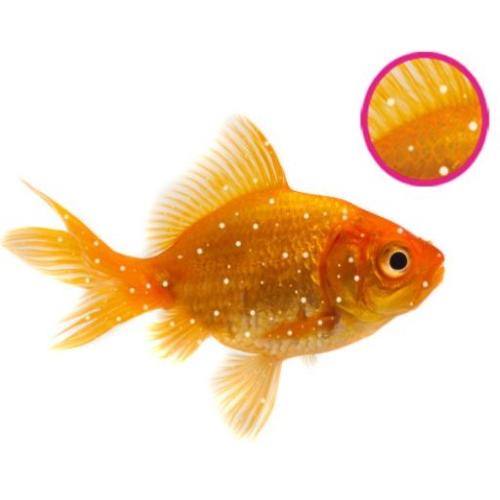
| A disease which looks like grains of salt scattered on body of fish. The fish will be showing signs of irritation. | Ich or White Spot | Ich Treatments White Spot Treatments |
Fluffy, white, cotton wool-like growths on body. 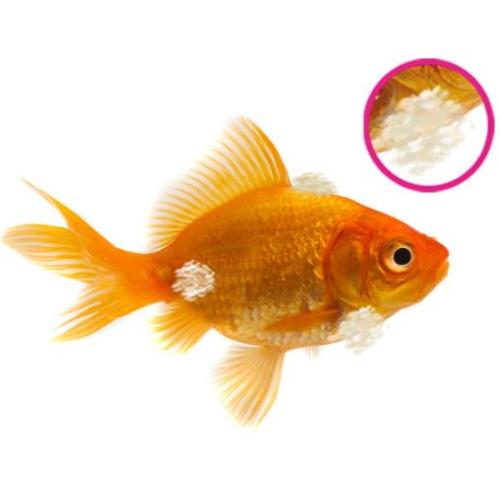
| Looks like fluffy white cotton wool-like growths on sides or wherever the scales have been damaged. It can sometimes have a green tinge from algae present in the water. | Most likely a fungal disease (Saprolegnia) | Fungus Treatments Salt Treatments |
Visible worms or scabs on body of fish. 
| Fish showing signs of irritation, in severe cases fish will be very lethargic. | Leeches, anchor worms or fish lice | Parasite Treatments Fish Lice Treatments Fluke Treatments Worm Treatments Salt Treatments |
Wounds or Missing Scales. 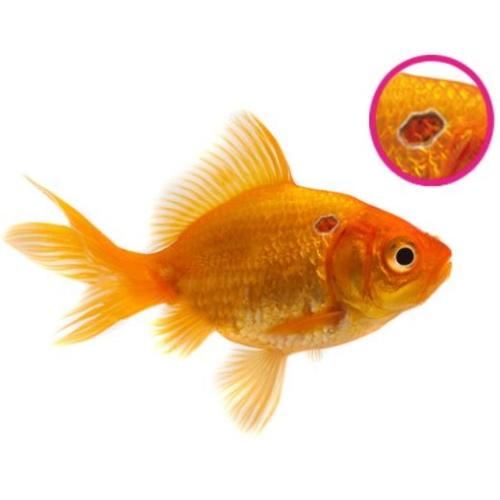
| Wounds, missing scales, red sores on body of fish where the skin has eroded. | Wounds, Lice or Flukes | Wound Treatments Fish Lice Treatments Fluke Treatments |
Greyish discolouration. 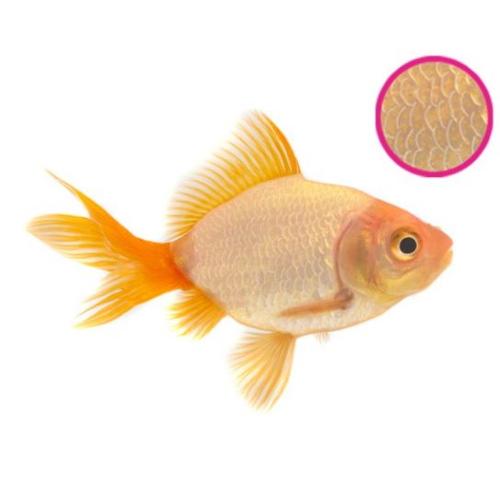
| Fish appears to be covered in a grey film, showing signs of irritation, gasping and clamped fins. | Velvet Disease | Velvet Treatments |
Fins or Mouth Rotting Away. 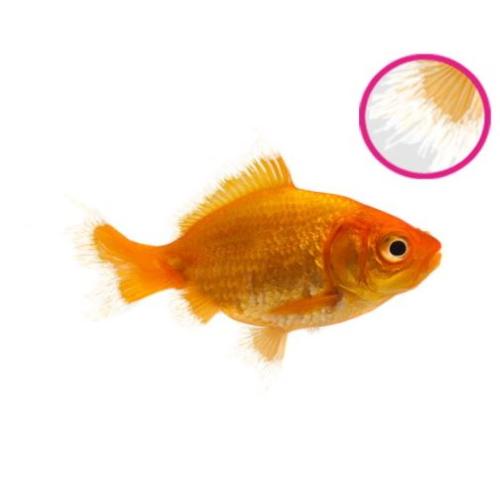
| The fins on your fish are starting to rot away.. | Fin Rot | Fin Rot Treatments |
Neon Tetra Disease (Pleistophora hyphessobryconis). 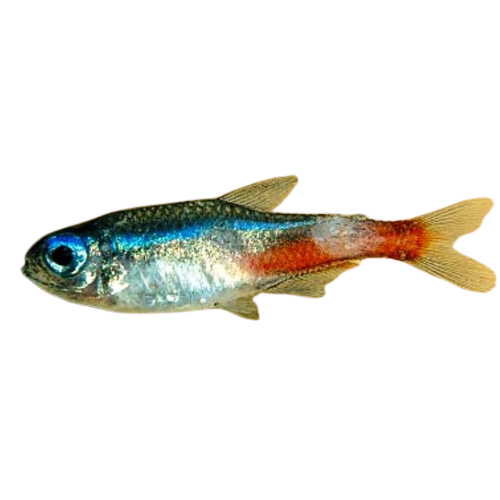
| Infects neon tetras, cardinals, rasboras, angelfish, zebrafish, and other similar species. Unfortunately this diseases is fatal and currently no cure exists but treatment will hopefully contain it. The disease is named such because it was first found in Neon Tetras, however it can also attack other Tetras and completely separate breeds. It’s a parasite in the intestinal tract that will eat the muscles starting from the inside out. Common symptoms include:
| Neon Tetra Disease | Neon Tetra Disease Treatments |
False Neon Tetra Disease. 
| A bacterial disease that infects Neon tetras, cardinals, etc. with almost identical symptoms is often misdiagnosed as Neon Tetra Disease (Pleistophora hyphessobryconis) and can be cured with antibiotics, which is why some tropical fish keeping enthusiasts believe there is a cure for the disease. | Bacterial Infection | Bacterial Infections Neon Tetra Disease Treatments |
| Lymphocystis is a viral disease that creates raised skin nodules. They may present with a few scattered nodules or a cluster of dozens. They can appear anywhere on a fish’s body, including the fins and oral cavity. Early infections may present as a thin film on the fish’s body. The virus spreads between direct contact and within the aqueous environment. Once in shed from an infected fish, lymphocystis can survive in the surrounding water for up to 1 week. Some fish may be asymptomatic carriers, in which they carry the virus, but do not show signs. Due to the long incubation period of weeks to months, the virus may not show up until well after most quarantine protocols have completed. | Lymphocystis | There is no treatment for lymphocystis. Often, signs of lymphocystis are exacerbated by other stressors in the tank, such as poor water quality, poor diet or inappropriate temperatures. By alleviating some of these issues, your fish may recover their previous appearance. Since it does not affect anything other than external appearance, it is of minimal concern to most fish owners. |
Bulging Eyes & Scales Sticking Out. 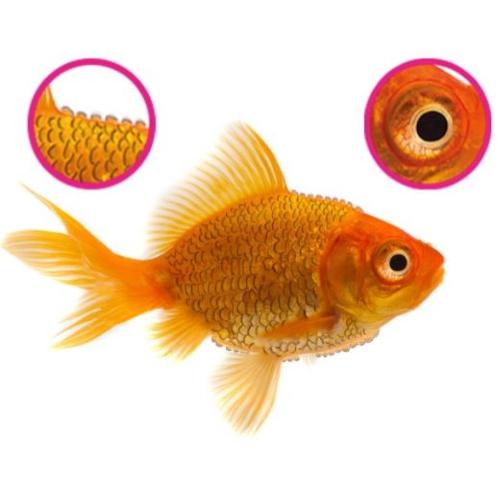
| The fish will look bloated and swollen, sometimes with scales sticking out like a pine cone. The fish will have problems with general orientation, have bulging eyes and difficulty swimming. | Dropsy or Bloat | Bloat Dropsy Treatments Popeye Treatments |
Hole in the head or Head and lateral line erosion. 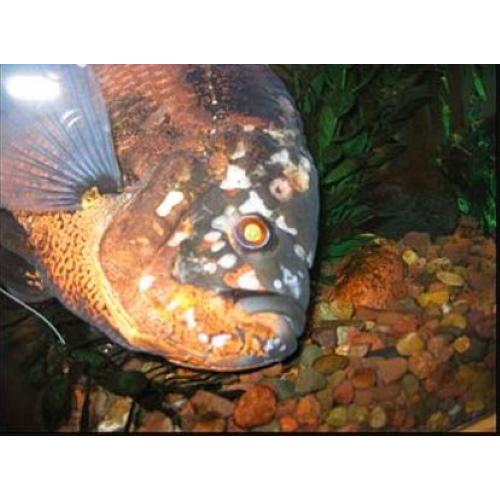
| Hexamitiasis is a parasitic disease that can affect both freshwater and saltwater fish. In some cases, lesions appear on the head and flanks of the fish, hence its names: Hole in the head disease or Lateral Line Erosion. Hexamita infections may also be responsible for head and lateral line erosion (HLLE) disease in fish. | Hexamita infections | Hexamita Treatments Hole in the head Treatments Lateral Line Treatments |
| Loss of appetite, listlessness and erratic swimming. | Internal parasites will cause loss of appetite, listlessness and erratic swimming. Note redness, irritation and/or threadlike worms coming from the fish’s tail area. If accompanied by bloating, these symptoms indicate a nematode infestation, also known as roundworm. Nematodes live in the intestines and should be treated carefully using a Worm Treatment. | Internal parasites or worms | Parasite Treatments Worm Treatments |
Clamped Fins. 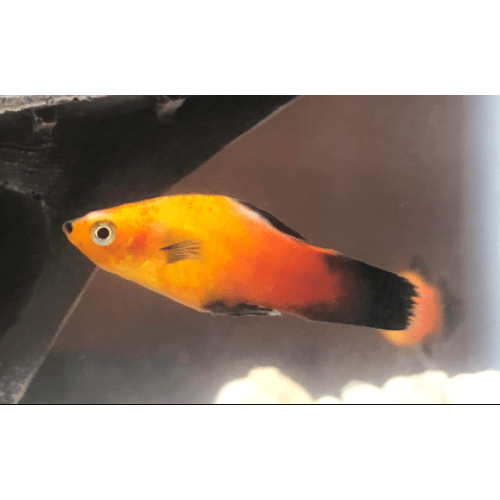
| Clamped fins are a condition that affects fish that have become stressed. It could be caused by poor water conditions, another fishes bullying or any of a variety of factors. The fish will be sluggish in their movements and the fins will appear collapsed and or closed. If the condition persists it can lead to other health problems and eventually death. Test water parameters like ammonia and nitrites to make sure there are no issues there. Clean the aquarium and do a 50% water change the first day followed by 25% changes each day until the condition clears. | Bad Water Conditions or Stress | Test Kits Ammonia Tests Nitrite Tests What is the Nitrogen Cycle Stress Treatments |
Planaria. 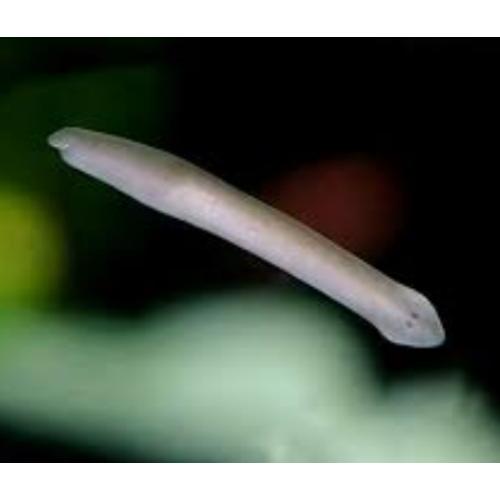
| Planaria are small, white flatworms that thrive in aquariums that have not been cleaned properly. Many freshwater fish enjoy eating these worms. Although the worms are not harmful to the fish, the conditions in which they thrive can be fatal. Planaria can even get into the gills of fish, causing irritation. With Shrimps, it’s a different story. Planarian secrete a toxin that’s harmless to fish but invertebrates, such as shrimps, are highly susceptible to it. Should the planaria slither under a shrimp’s body, as they are likely to do, they can transfer the toxin directly into the shrimp’s tissue. | Planaria Infestation | Planaria Treatments |
Hydra. 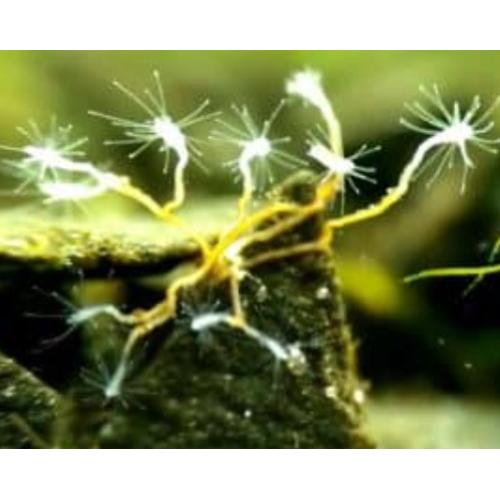
| A Hydra is a soft-bodied polyp of the Phylum Cnidaria, one of the most ancient animal groups in evolutionary terms which includes corals, jellyfish, hydras, and myxozoans. A Hydra has a tubular body with a sticky foot at one end and a dozen tentacles at the other.1 Like jellyfish, these tentacles possess stinging cells that allow the Hydra to immobilize their prey. They primarily eat small aquatic organisms such as cyclops, daphnia, and other aquatic crustaceans, but can catch and ingest small fish. |
I found this chart on one of the local online aquarium stores page https://rebelpets.co.za/fish-disease-diagnosis-and-treatment/ and thought it would be a very useful resource.
Last edited:
